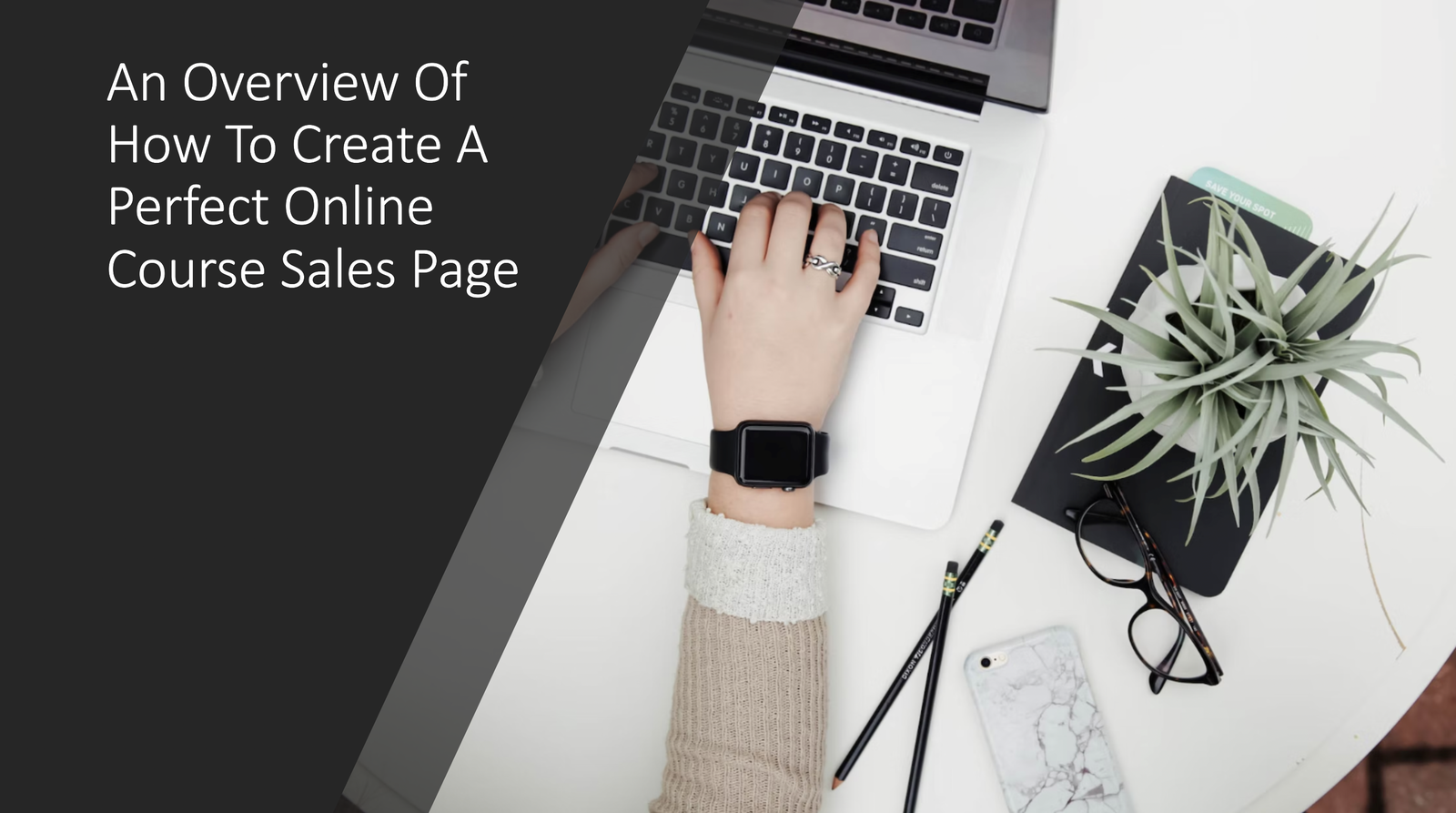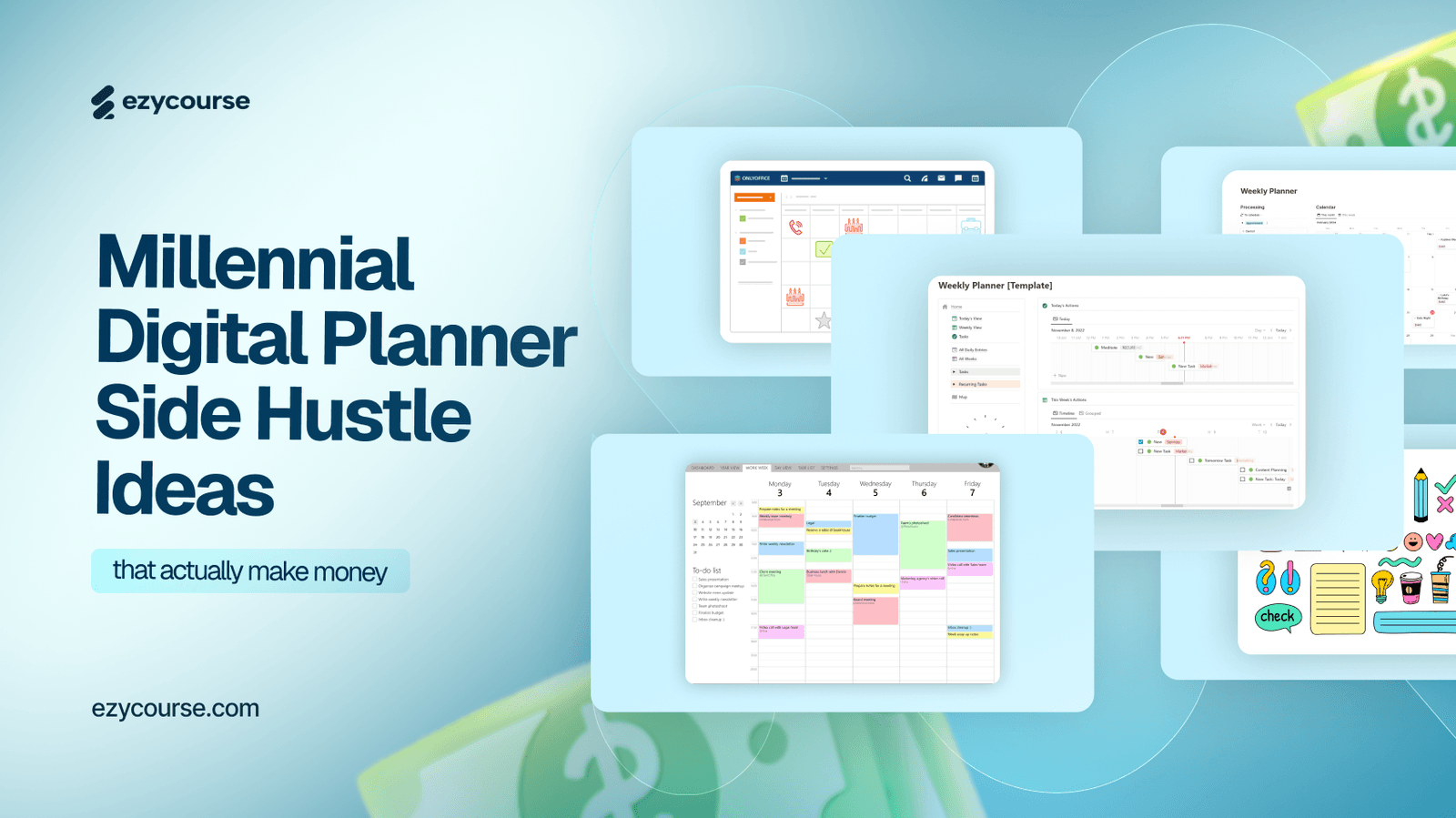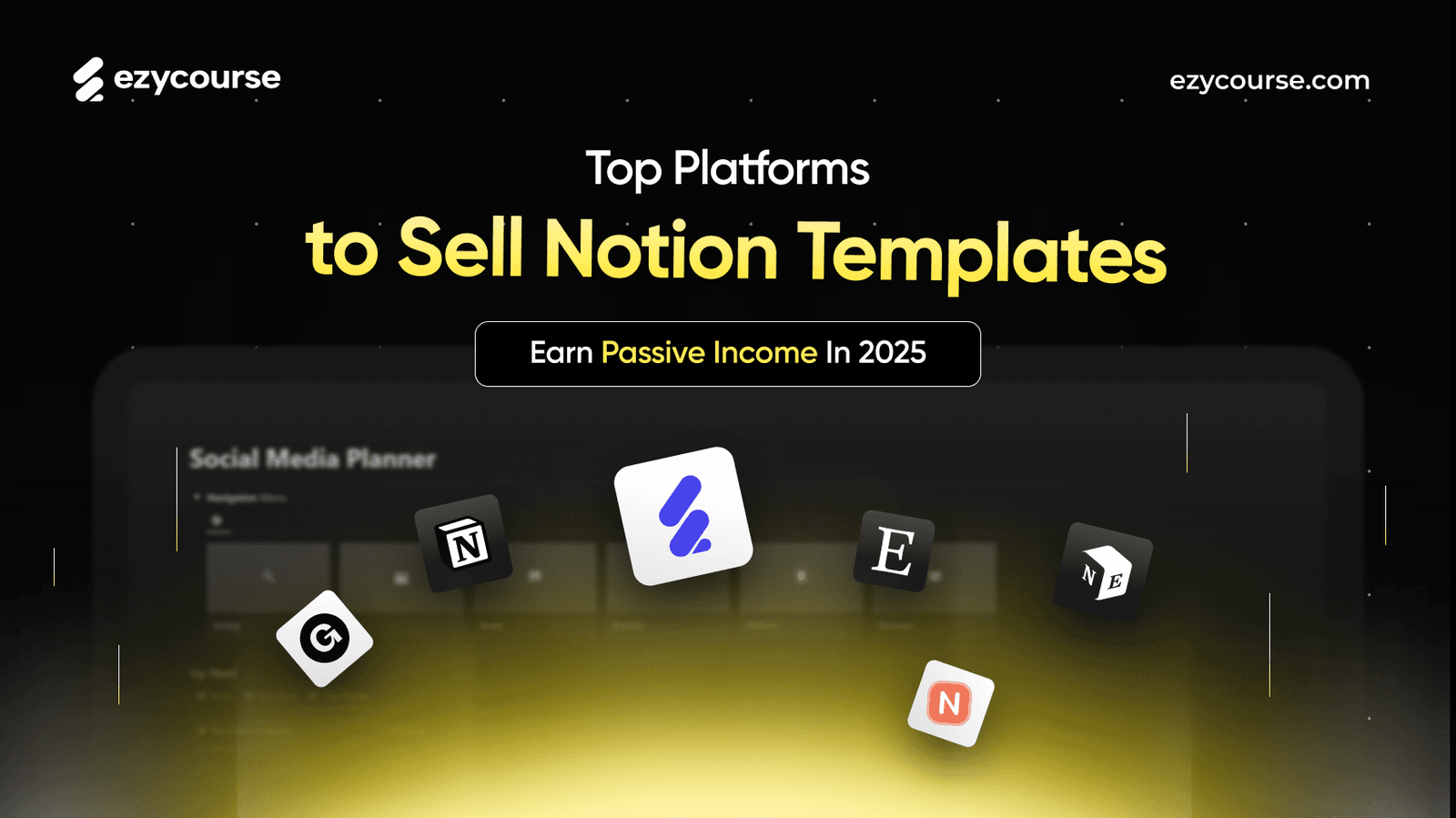A course creator's great moment finally arrives when he presses the publish button. All the planning, writing, and recording is about to pay off. You're really pleased with the course you've designed, and you know it will have a significant influence on your students!
The sales page for your course is just as important as the course itself, and many creators overlook it.
So many hours have been spent developing their course, hosting webinars, and spending their hard-earned money on advertisements, promotions, and collaborations, and sending all this traffic they generate to mediocre, badly designed sales pages!
And no matter how much traffic there is, the courses just do not sell.
Do you have no idea how to create the ideal sales page for online courses? Nothing to worry about!
In this post, we will learn how to dedicate as much attention and care to the sales page for your online course as you did to the rest of the courses in your course.
We will utilize a free and simple page editor that does not require any design or technical expertise to construct a great-looking and, most importantly, high-converting course sales page.
To be effective, the landing page must be prepared using a certain set of copywriting strategies, which we will explain in depth in this post with real examples.
To design an efficient online course sales page, follow these steps:
Select an online course platform that is simple to use.
Make an appealing course thumbnail.
Create an eye-catching title.
Discover the AIDA copywriting model.
Create a captivating course title using AIDA concepts.
List your main characteristics.
Create an enticing course description.
Overcome objections with a comprehensive FAQ section.
Create authority with the author section.
Set The price of your course
Create and promote your course page.
This is the high-level method that we will cover in this guide, but now let's go into the specifics of each of these processes.
How Your Sales Page Could Look!
When you create a new course sales page using EzyCourse, your page will look like this:
Create a Course Page with a Simple Course Editor
When you create your course, here is what your course editor looks like :
The first step in developing your course is to design your course lessons, add your videos, and bring your course to life. This is the most interesting aspect for most course developers.
When you've finished this part of the process, you're ready to hit the publish button and share it with the rest of the world.
But wait a minute because nobody will buy your course until you create an eye-catching, captivating, and immersive course sales page.
And this is why EzyCourse brings a “Landing Page” option in course settings and lets you customized your own landing page.
EzyCourse brings to you a very sophisticated drag-and-drop site builder, with over 250+ pre-made templates and blocks for you to get started easily even without any coding knowledge. You can easily create your own designed landing pages.
Here is where the true magic takes place. No matter how excellent your course is, unless this page attracts your students' attention and prompts them to purchase the course, they will not become your students.
Visuals make a big difference on your page since we live in a fast-paced world full of distractions.
In this article, we'll teach you how to use a simple procedure to design a visually appealing and high-converting course sales page.
1. Make an appealing course thumbnail.
When someone visits your website, this is their first impression:
The title and text are prominent, but what draws your attention is the thumbnail, right?
Many course designers neglect this. And this is where they made a mistake.
A fascinating thumbnail image may be seen on all of the greatest online course sales websites because it serves as the first point of contact between you and your audience.
In addition to being the first thing your students see, your course thumbnail is what you share on social media and via email, and when students share your course, other people see it, and most importantly, good design helps establish credibility. And this is why your course thumbnail is so important.
How to Make a High-Converting Thumbnail Image
To make a successful thumbnail, simple is always best.
Too much “crowded” image you definitely do not want, and thus we recommend you hire a graphic designer that understands the rules of attracting a person’s attention.
If you prefer to make your own thumbnail, a free online graphics generator site can help you achieve a great finish.
The following are the important elements:
Title
The Image, Icon, or Graphic
The Colour Scheme
Always try to keep it simple. The main objective of this thumbnail is to attract your audience's attention, something a "busy" visual will not do.
Once you've created your thumbnail, you can easily upload it to your sales page:
2. Create an eye-catching title.
When you have a great thumbnail, you can now work on the main titles of your course, namely the course title, the subtitle, and a brief description
When you add your titles, you'll see something like this:
Your titles should be the proper length; too short is bad but too long is worse.
But now comes the dilemma of how to write compelling titles.
An Overview of the AIDA Copywriting Model
To create captivating copy, an effective technique is to employ the AIDA Model:
Attention
Interest
Desire
Action
The AIDA model not only assists you in creating effective titles, but it also assists you in writing high-converting copy in general.
The title, subtitle, and short description you create should captivate attention, spark curiosity, trigger some type of emotional response, and entice the reader to proceed.
Awareness, Interest, Desire, Action -this is how you create an intriguing and successful copy by activating these emotions in this particular order, and the final step Action means purchasing your course.
There are tools to assist you in accomplishing this, but no tool will provide you with the solution you require.
This asks you to take a moment and consider the headline that your students would like to read. Let's look at some real-world examples.
Creating a Course Title Using AIDA Principles
Let's apply the AIDA Model to create a course title, in order to start understanding how it works.
In the AIDA Model, the title captures the attention and interest of the student.
Here is how we used AIDA to craft a compelling title:
Starting a headline with "How To" is an excellent method to get attention because it implies that you will demonstrate to your students how to solve an issue.
The emphasis of this headline is on the idea of becoming an expert in Shopify. This piques people's interest and makes them want to know how you can do it.
Becoming an expert from zero to a hero produces an emotional response in those who are actually wanted to be.
Finally, this training guarantees a result within the following 90 days.
Several parts of the AIDA concept can be seen in operation here: The title captures the student's attention and interest by providing a definite schedule for achieving favorable results, which also works on the Desire factor.
The same procedure is used for the subtitle or short description:
Your short description should elaborate on your title, giving a clear picture of what will happen and how it will happen.
The Title of this course promises to make you an expert within the next 90 days, which will lead to becoming Shopify Expert.
This title is intended to entice you to dive deeper and commit to learning more!
Your goal with this Short Description is to summarize what they will get by taking your course. In this case, you'll discover how to hack your life so that you may accomplish more in less time.
You may have noticed that no features are covered in this section at all.
This section is all about triggering emotions and making your students feel something.
If you do this, you will soon have a page title section that looks like this...
And this is essentially how you can captivate the student's attention and interest, as well as begin to create a desire to enroll in the course.
Take note that this was all based solely on a few phrases (title and subtitle) and an image!
Your students will not follow you until they see a strong title, subtitle, and thumbnail first.
It's critical that you get your title and thumbnail perfect because most purchasing choices are based only on these factors and the price.
So, before anything else, you must get things correct.
Once you've gotten their attention and interest, it's time to start focusing on the Desire element of the AIDA model.
3. Make a list of your core features (create a desire)
After capturing their attention and interest with the title, the advantages section is where you will generate the majority of their desire to purchase the course.
Many of the rules that apply to your Title and Subtitle apply here, so employing the AIDA Model to increase attention, interest, and desire is a solid strategy.
This means that the advantages section should focus entirely on the outcomes that the student will obtain as a result of taking the course.
The purpose is not just to make a table of contents, but also to identify all of the concrete ways in which the course will benefit the student.
That final point is the most crucial portion of this piece. Yes, you should highlight your own experience and hint at what your course offers and how it may benefit... Most importantly, you must illustrate how it will positively influence them personally.
You'll need to finish at least four, while we propose a minimum of six main features/benefits.
There’s no limit on how many you can have, although it’s important to be very selective about the ones you choose.
Don't go overboard because there's a delicate line between too little and too much.
Remember, the main goal of the benefits section of your page is to create a Desire for buying the course, and further build up Attention and Interest wherever possible.
4. Create a Course Description That Sells
Until now, your primary goal has been to capture and maintain your audience's attention while also developing some desire.
Many people will be eager to buy the course after reading the title, subtitle, and benefits section, as well as verifying the price.
But not everyone will make such a hasty decision; many individuals will wish to learn more about the course before making a purchase. This is when your long course description comes into play! This is what it will look like when you’re finished:
How to Write an Effective Course Description
You can format your description however you want, but we recommend breaking it up into a few sections to make it more understandable.
This is divided into four sections:
Course Overview: This is your course's introductory part, and it should be formatted similarly to your Short Description from Step 1. In one or two sentences, explain what your course is about, who it helps, and how it helps them.
Table of Contents: The fine line between too little and too many returns, since this isn't the time to detail ALL of your lessons (unless you have a short course), but you should highlight some of your most transformative ones. This list gives them a taste of what they'll soon be able to access, feeding their interest.
What You Will Learn: This section is entirely dedicated to them. Your objective is to offer a clear image of what life will be like for them after they finish your course. Make sure you emphasize their current pain and how you may assist them to alter it by guiding them through a specific process. Once again, instead of listing a slew of features, focus on the benefits.
Call to Action: Make a clear call to action for the learner at the end of the text, inviting them to purchase the course
We advise you to use the rich text customization features to further attract the student’s interest.
When there are big walls of unformatted text, most people become disoriented and lose focus.
To avoid this, divide your page into sections, add color, headlines, and even photos (which you can copy/paste directly into the description).
Create an experience that is pleasing to the eye as well as the intellect!
Even after reading the entire description, some students will be unable to decide whether or not to purchase the course due to a common argument that was not addressed elsewhere on the page.
And this is where the FAQ section comes in.
5. A powerful FAQ section will help you overcome objections
Without a FAQ area, no course sales page is complete!
The goal isn't so much to answer popular queries as it is to anticipate and illuminate key concerns that keep folks on the fence.
How to Make a Useful FAQ Section for Your Course Page
There is no correct or wrong number of questions to answer. You don't want to list too many, but you do need to address all major concerns.
As a result, as you grow to know your audience better, you may notice that this section of your page evolves over time.
Knowing who they are is crucial in this situation. There are certain factors that will help you produce a better FAQ section and, in general, a better course page:
What is their major problem?
What is their current status, and what is preventing them from moving forward?
What are they scared about... What is holding them back from taking the next step?
What's the primary question/concern on their mind?
What are they still uncertain about?
What are they suspicious of, and what is causing their suspicion?
The better you grasp these concepts, the more successful your copy will be. These objections are what prevent you from dealing with potential students.
Again, the goal here is to focus on rewards and emotion rather than features and reasoning.
Whether they are aware of their concerns or not, they will not purchase your course unless you assist them in overcoming these last hurdles.
6. Create Authority in the Author Section
A common criticism or query that customers want to be answered before purchasing a course is who wrote it.
As previously stated, the author section of your Main Course Description is intended to provide a concise overview of your authority and credibility as a course creator.
Separate author/instructor features allow you to provide information such as awards, qualifications, origin stories, and links to articles, interviews, and talks.
Your audience will also benefit from this interaction.
7. Trigger an action by setting a price for your course
There is one last step to complete, and that is to determine the price for the course sales page.
You can charge anything you want for your course; the pricing is determined by you and your audience, as well as the business you're in.
We won't go into the art and dynamics of pricing here because that is a separate guide. If you want to details about pricing you can go through this article: 7 Tips For Pricing Online Courses
The major purpose of the pricing, together with the Purchase course button or the Subscription button, is to invite the student to take the course, which is the AIDA model's Action portion.
How to Use a Discounted Price to Induce a Purchase Action
The effect of the price in the action-taking process can be further enhanced by comparing the sale price with a discounted price, and one way to do it is to create a discounted coupon.
You can make as many coupons as you like and edit them as needed:
It asks you to fill out the following information when creating a new Coupon:
Provide a Name
A Coupon Code
What percent of discount you want to provide
Set the duration, once or forever.
Produce a Total Number of Coupons Available
Create an Expiry Date For This Coupon or if you want you can have it for a lifetime.
Once you publish this, you’ll see a list of all your present and past coupons:
This brings you to the finish line and the time to press the “Publish Course” button.
The final course page looks like this once your course has been published.
Now that your course is live, you're ready to sell your online course to future students.
Conclusion:
Even with no design or technical skills required, you can create a great-looking course sales page.
You can do so by creating a free account now on EzyCourse and start creating your courses using our Free Plan.
Thanks for reading this guide! I hope you found it helpful in creating the perfect course sales page.





